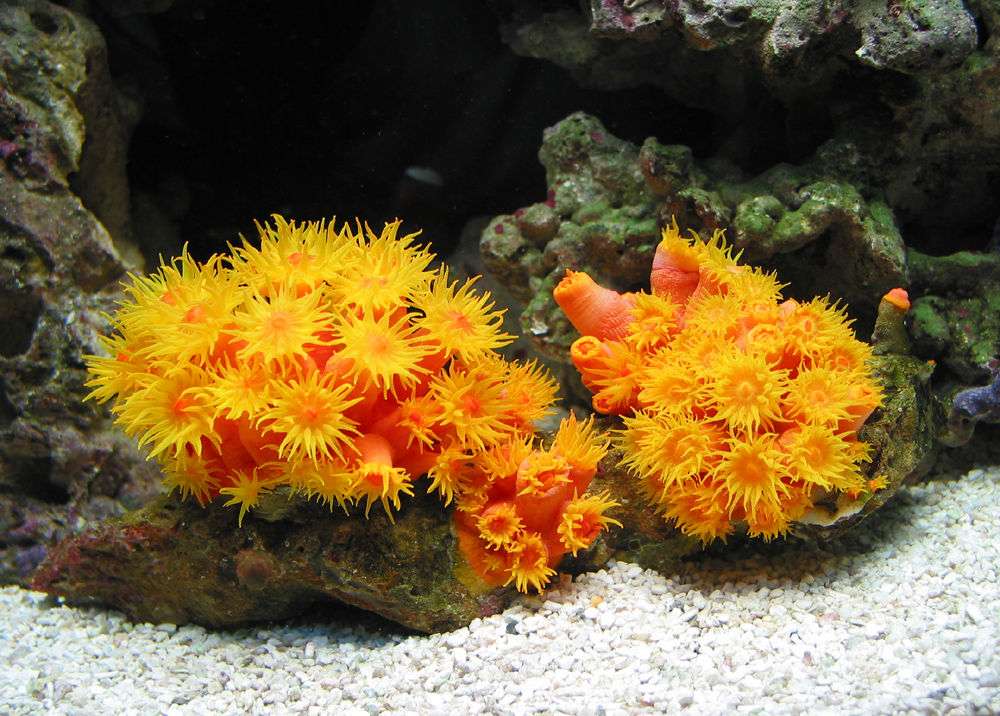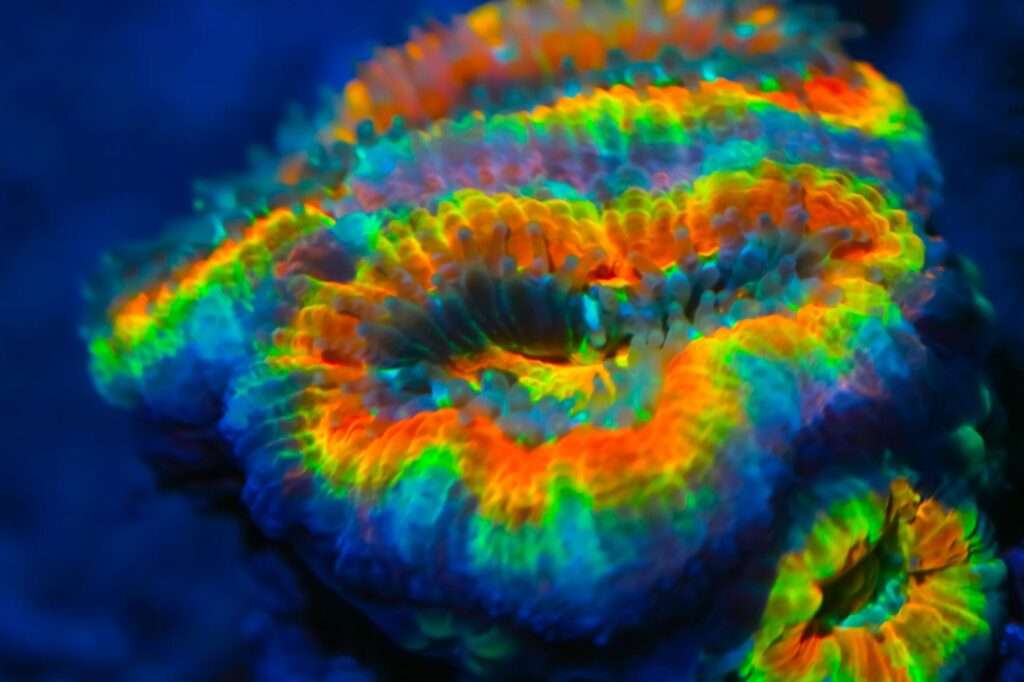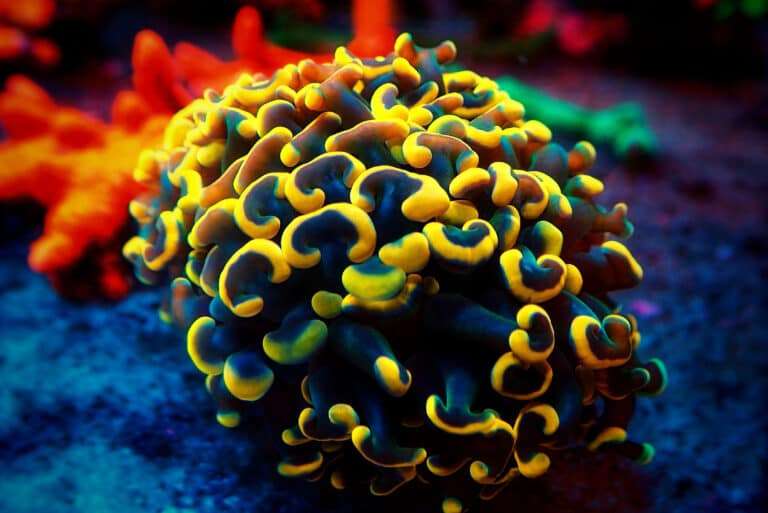
Because the Orange Sun Coral (Tubastraea faulkneri) is so stunning, it frequently appears on the covers of coffee table books and coral-related books. It has consistently been the winning subject in photography contests, and it is simple to understand why. It is very garish and captivating with a brilliant yellow against an even brighter orange.
The rigid, spherical, tubular corallites of the Orange Sun Coral, which the polyps inhabit. The coenosteum is a tissue that protects the corallites. The coenosteum and the very centre of the polyps are both brilliant orange, while the fleshy tentacles of the polyps are bright yellow. They generally extend their polyps at night, though if food is present throughout the day, they may do so. Only the vibrant orange coenosteum, which resembles a ball with elevated circular flat nubs, is visible during the daytime when the coral is entirely removed.
Habitat
Lesson first outlined the Tubastraea genus in 1829. They are primarily ahermatypic corals, which do not produce reefs. There are 7 varieties of Tubastraea. The Indo-Pacific region of Australian waters has the T. faulkneri, which can be found there along tropical coastlines before moving south to Sydney and then west to Jurien Bay. In waters with a high nutrient content and vigorous water flow, the T. faulkneri live at cave entrances and beneath overhangs. They have also been discovered in regions away from the reef that receive sunshine. The range of their depths is 0 to 131 feet (0 – 40 m).
Morphology
Around 6″ (15 cm) in diameter, T. faulkneri colonies occasionally develop on one another to create a more intricate and substantial “community.” It is an ahermatypic coral, which does not produce reefs. Their corallites, or the tough, spherical housing the polyp inhabits. The coenosteum is a tissue that protects the corallites. The Orange Sun Coral has very fleshy polyps that stretch largely at night, however if food is available, they may also do so during the day. The coenosteum, tentacles, and very centre of the polyps are all brilliant orange, whereas the coral’s tentacles are bright yellow. Only the vibrant orange coenosteum, which gives the coral the appearance of a ball with elevated circular flat nubs, is visible during the daytime when the coral is entirely retracted. The Tubastraea species with the most name recognition is T. faulkneri.
In Captivity

- Feeding
Corals in the azooxanthellate, or non-photosynthetic, genus Tubastraea are so-called. This indicates that they do not share a symbiotic relationship with the marine algae zooxanthellae like the majority of other large polyp stony (LPS) corals do. They may absorb dissolved organic matter, food particles from the water column, and planktonic creatures to feed. Others eat little fish as well. Put the meal in a vitamin solution to help the coral reproduce more quickly. They appear “bloated” if they have been well-fed. Eat each day.
- Social Interactions and Compatibility
T. faulkneri doesn’t bother other corals. However, because they lack powerful stinging tentacles, it is important to keep them away from other corals. The Tubastrea Snail Epitonium billeeanum feeds on the Tubastraea genus. These snails resemble coral polyps in both colour and shape when they are closed. Another annoyance is the nudibranch Phestilla melanobrachia. It has the hue of the particular Tubastraea that it consumes. When you receive your specimen, carefully inspect it to look for and eliminate these pests.
Table





